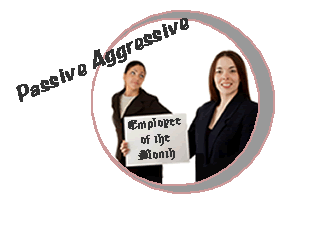- POPULAR ARTICLES
- Thank You Words
- Retirement Wishes
- Face to Face
Passive Aggressive Behavior and Communication
Passive aggressive behavior is just another form of agressive behavior. It takes the form of sarcasm, malicious rumors, sabotaging, stalling, and other creative ways of attacking the object of the passive agression.

Both passive aggressive and agressive behavior represent an inability or unwillingness to ask directly for what one wants. The only difference is that bullying is open aggression, while passive-aggressive communicating is covert aggression.
When we grow up, we're generally told to be nice and polite, and to avoid being a nuisance. Our needs are generally placed second to the needs of others. This is all done in the name of generosity and altruism.
Over time, some of us develop a 6th sense and mastery for pleasing people. We may even go as far as not realizing that deep inside we have unspoken needs and wants. We may resent having to suppress our needs, and the resentment shows up in hidden aggression, namely passive aggressive behavior.
You know you want to change, but you don't want to become an overbearing type. There is a middle point, being assertive, where you can be open and direct about your needs, and yet remain caring and respectful about the needs of others.
How to be assertive
The best information I've ever come across at becoming more assertive comes from two sources:
The first source is an article from Nathaniel Branden called: To Succed at Anything in Life You Must Know How and When to Be Assertive.
The second source on how to be assertive is an Assertive Management seminar led by Ray Thorn at the California Institute of Technology (Caltech) in Pasadena, California.
Whether you engage in aggressive or passive-aggressive behavior, the solution is the same: to learn how to be assertive, so you can express your need in a direct and caring way.
Read other Interpersonal Communication Articles




